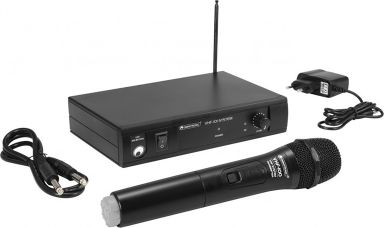Wireless systems
No tangled cables, no tripping hazards, no risk of falling: the advantages of the practical wireless systems are not only obvious, but they clearly outweigh the disadvantages, so that these modern systems have become an indispensable part of the day-to-day applications in the events sector. Be it theatrical performances or live concerts: wireless microphones and other general wireless systems provide the desired freedom of movement on stages, in recording studios or wherever else they are used.
Transmitter and receiver: how wireless systems work
In general, a wireless system contains two main components: a transmitter and a receiver. Depending on the transmitter type, a short cable may be included to connect the instrument (e.g. guitar) to the transmitter. There are also compact transmitters that are equipped with an integrated stereo jack. These jacks are then plugged directly into the electric (bass) guitar and are not quite as flexible. There's also the risk of them slipping out while playing the guitar on stage.
Wireless systems - digital, versatile and wireless
Especially for guitarists and bassists, wireless systems are a very popular option because of their versatility: this allows the musician to move freely on stage with his/her guitar, without any annoying and, above all, very restrictive cables. Many wireless systems can be used without adjusting the level, channel and squelch. Digital systems operate in the 2.4 GHz range. There are hardly any other relevant radio signals in this frequency range and a digital transmission is not compressed or decompressed on reception - the signal is transmitted without being processed. In addition, the digital systems are characterised by a distortion-free reproduction. In our online shop, you can decide on the wireless system that ideally meets the desired requirements - find out more now!


































 Express delivery possible
Express delivery possible































